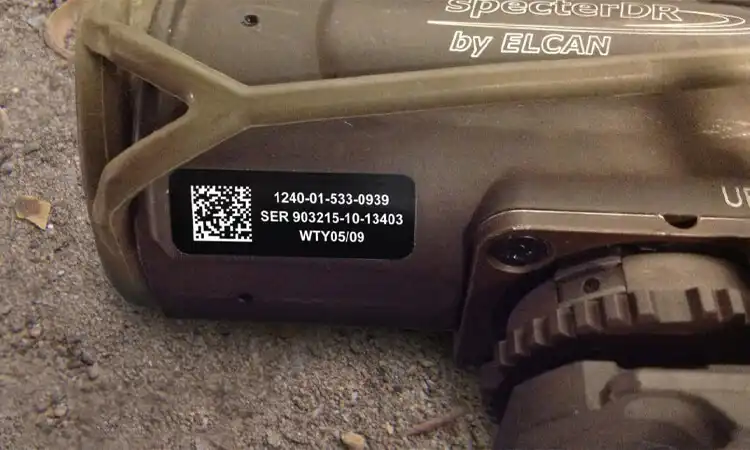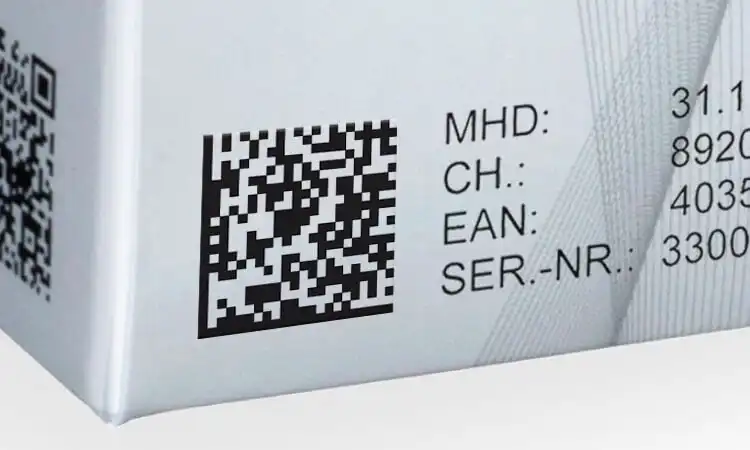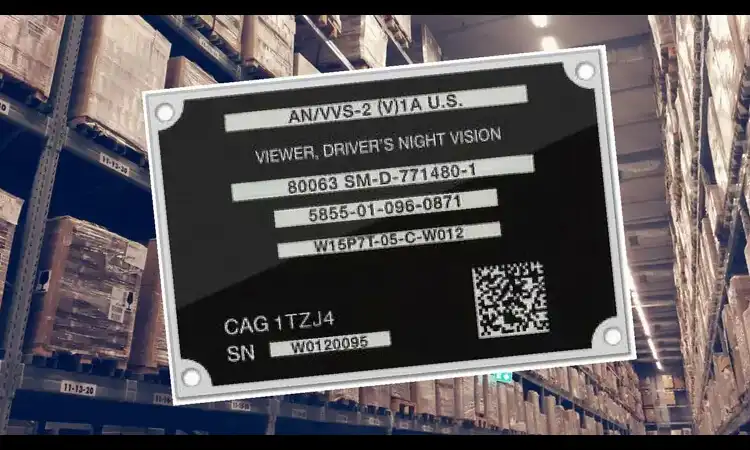Unique Item Identifiers (UIIs) are essential in supply chain management. These unique codes help organizations track their assets and inventory, providing visibility throughout the entire supply chain. Item Unique Identifications come in different formats, such as barcodes, RFID tags, and serial numbers. In this blog, we will explore what UIIs are, how they are used in different industries, and the challenges organizations face when implementing UIIs.
Understanding the Basics of UII
UII stands for Unique Item Identifier, is critical to the DoD’s Item Unique Identification Data(IUID) program. It is a unique and unambiguous identifier assigned to an item for identification and tracking throughout its lifecycle. The Item Unique Identification is represented as machine-readable code. It is typically a combination of characters and numbers stored in a database such as the IUID Registry.
The Unique Item Identifier system provides a unique identification code for each item within an inventory or collection. It is a digital fingerprint for items, enabling precise tracking, differentiation, and management.
UII Mean: 2D Data Matrix Symbols
The Department of Defense uses 2D Data Matrix barcodes to represent the Unique Identifier Index or Item Unique Identification assigned to items. A 2D Data Matrix symbol has a square or rectangular checkerboard grid pattern that can encode large amounts of data into a small space.

EachData Matrix symbol contains a minimal set of data elements needed to construct the complete UII for an item or its approved IUID Equal. The symbols can store 100 times more data than a traditional linear barcode in the same area.
Some key benefits of 2D Data Matrix for Item Unique Identification include:
- High data density: Encodes extensive identifiers and all required item details in a compact symbol.
- Omnidirectional scanning: Can be scanned from any direction, enabling flexible placement of items.
- Damage tolerance: It can sustain damage but still reliably retrieve the encoded Item Unique Identification. It supports the durability needs of military equipment.
- Scalability: Symbols can vary in size depending on available space, from 0.001 inches up to 14 inches per side. Appropriately sized for most items.
- permanence: Data Matrix symbols can be directly marked or affixed to items using labels or plates. This ensures the Unique Item Identifier remains intact for the lifetime of an item.
Imaging scanners capture the symbol to read a UII from a Data Matrix symbol. It decodes the binary data into an item’s concatenated Item Unique Identification and associated details. The Item Unique Identification then links that item to its registry records and information across DOD systems and stakeholders.
Data Matrix symbology provides a robust and space-efficient means of embedding UIIs and identities onto DoD property and equipment. It enables permanent, precise, and interoperable identification that strengthens department accountability, visibility, and readiness.
Assigning Unique Item Identifier Codes
To implement the UII system, organizations assign unique codes to their items using a structured format. These codes can be alphanumeric and may incorporate semantic terms or keywords relevant to the item. For example, in a manufacturing setting, the UII code may include information such as the product category, manufacturer, batch number, and serial number. This structured approach ensures that each item is assigned a distinct code that reflects its specific attributes.
Related Articles: What is IUID (Item Unique Identification)?
Benefits of Using UIIs in Supply Chain Management
Item Unique Identifications offer a variety of benefits to organizations that use them for asset tracking and inventory management. Here are some of the key advantages of implementing Item Unique Identifications:

Improved Asset
Tracking UIIs enables organizations to track their assets with precision and accuracy. This tracking capability makes it easier to manage assets throughout their lifecycle, from procurement to disposal. The use of Item Unique Identifications also helps organizations identify lost or stolen assets, reducing the risk of asset loss.
Enhanced Inventory Management
Item Unique Identifications enable organizations to track the location and movement of their inventory in real time. This information allows organizations to optimize their inventory levels and reduce the risk of stockouts. Improved inventory management can lead to significant cost savings and a more efficient supply chain.
Reduced Risk of Counterfeiting and Fraud
Item Unique Identifications make it more difficult for counterfeit products or assets to enter the supply chain. Organizations can use Unique Item Identifiers to verify their products’ authenticity and ensure they are not being counterfeited. Additionally, Item Unique Identifications can help prevent asset theft and fraud by providing a way to identify stolen assets.
Facilitation of Data Sharing and Interoperability
Item Unique Identifications enable different systems to share and access data more easily. Organizations can use standard Unique Item Identifier formats to ensure their data is interoperable. It can be easily shared between different systems. This can lead to more efficient collaboration and improved supply chain performance.
Cost Savings
Item Unique Identifications can help organizations save money by reducing the cost of asset management and inventory control. By implementing UIIs, organizations can reduce the risk of lost or stolen assets, lower the cost of inventory management, and improve supply chain efficiency.
UIIs in Different Industries
The use of Unique Item Identifiers is becoming increasingly common across a wide range of industries. Here are some examples of how Unique Item Identifiers are being used in different sectors:
Military and Defense
The US Department of Defense (DoD) requires Item Unique Identifications for all its assets, including weapons, vehicles, and equipment. Item Unique Identifications help the military track assets across many locations and ensure they are in good working condition. The DoD uses a unique format for its Item Unique Identifications, the Global Unique Identifier (GUID).
Healthcare
Item Unique Identifications are used in the healthcare industry to track medical devices, such as surgical instruments, implants, and equipment. Unique Item Identifiers help healthcare providers manage their inventory, reduce the risk of medical errors, and ensure patient safety. The Food and Drug Administration (FDA) requires certain medical devices to have a unique device identifier (UDI), a type of UII.
Retail
Retailers are using Item Unique Identifications to manage their inventory and prevent theft. Many retailers use RFID tags to track merchandise from the warehouse to the store shelf. These tags enable retailers to monitor the movement of products, reduce inventory shrinkage, and improve supply chain efficiency.
Automotive
The automotive industry is using Item Unique Identifications to track vehicles and components. Item Unique Identifications enable automakers to monitor the production process, manage inventory levels, and ensure the quality of the finished product. Item Unique Identifications are also used to track automotive parts throughout the supply chain, from the factory to the dealership.
Aerospace
Unique Item Identifiers are used extensively in the aerospace industry to track plane parts and components. Many suppliers often manufacture these parts, which must be tracked carefully to ensure safety and reliability. Item Unique Identifications help aerospace companies manage their inventory, track maintenance records and ensure the safety of their aircraft.
Oil and Gas
In the oil and gas industry, Unique Item Identifiers are used to track equipment and supplies used in exploration and production operations. Item Unique Identifications enable oil and gas companies to manage their inventory more efficiently and reduce the risk of equipment loss or theft.
Challenges and considerations when implementing UIIs
While the benefits of using UIIs are significant, there are some challenges and considerations that organizations should keep in mind when implementing them. These include:
Cost
The initial cost of implementing UIIs can be high, depending on the size of the organization and the number of assets that need to be tracked. Organizations should consider the return on investment before implementing Item Unique Identifications.
Standardization and Integration
Item Unique Identifications must be standardized and integrated into existing systems to ensure interoperability and data sharing. This process can be challenging, especially for organizations that operate in many locations or work with partners that use different systems.
Data Quality and Security
Item Unique Identifications rely on accurate data, and organizations must ensure that the data is high quality and secure. Item Unique Identifications also raise privacy concerns, and organizations must ensure that they comply with relevant regulations.
Maintenance and Upkeep
Item Unique Identifications require maintenance and upkeep to ensure that they continue to function correctly. Organizations must consider the cost and effort required to maintain Item Unique Identifications over time.
Regulatory Compliance
In some industries, regulations mandate the use of URIs. Organizations must comply with all relevant regulations to avoid fines and penalties.
Training and Education
Item Unique Identifications require specialized training and education for staff who manage and use them. Organizations must invest in training and education to ensure staff members can effectively use Item Unique Identifications.
In conclusion, Unique Item Identifiers are a valuable tool for organizations looking to improve asset tracking, inventory management, and supply chain efficiency. While there are challenges and considerations to remember, the benefits of implementing UIIs far outweigh the costs. By adopting Item Unique Identifications, organizations can improve their bottom line, enhance data sharing, and reduce the risk of fraud.
Related Articles: What is a UID(Unique Identifier)?
About DoD’s Unique Item Identifier (UII) FAQs
-
How are Item Unique Identifications used in the military?
In the military, Item Unique Identifications track equipment, weapons, and supplies. The Department of Defense has implemented UIIs to improve asset visibility and reduce the risk of lost or stolen equipment.
-
What are the privacy concerns associated with using Item Unique Identifications?
Using Item Unique Identifications can raise privacy concerns, particularly if the data collected includes personal information. Organizations must comply with relevant privacy regulations. Organizations also need to take appropriate measures to protect sensitive data.
-
What industries are adopting Item Unique Identifications?
Item Unique Identifications are becoming increasingly prevalent across various industries. This includes military, healthcare, retail, transportation, logistics, and oil and gas.
-
How do Item Unique Identifications differ from traditional inventory tracking methods?
Item Unique Identifications differ from traditional inventory tracking methods because they provide a unique identification number for each item. It enables organizations to track items more accurately and in real time.
-
How are Item Unique Identifications being used in healthcare to improve patient safety?
Item Unique Identifications are used in healthcare to track medical devices and equipment. It helps healthcare organizations manage their inventory, reduce the risk of equipment loss, and improve patient safety. The FDA has also mandated using UIIs for medical devices to streamline the recall process and improve patient safety.








